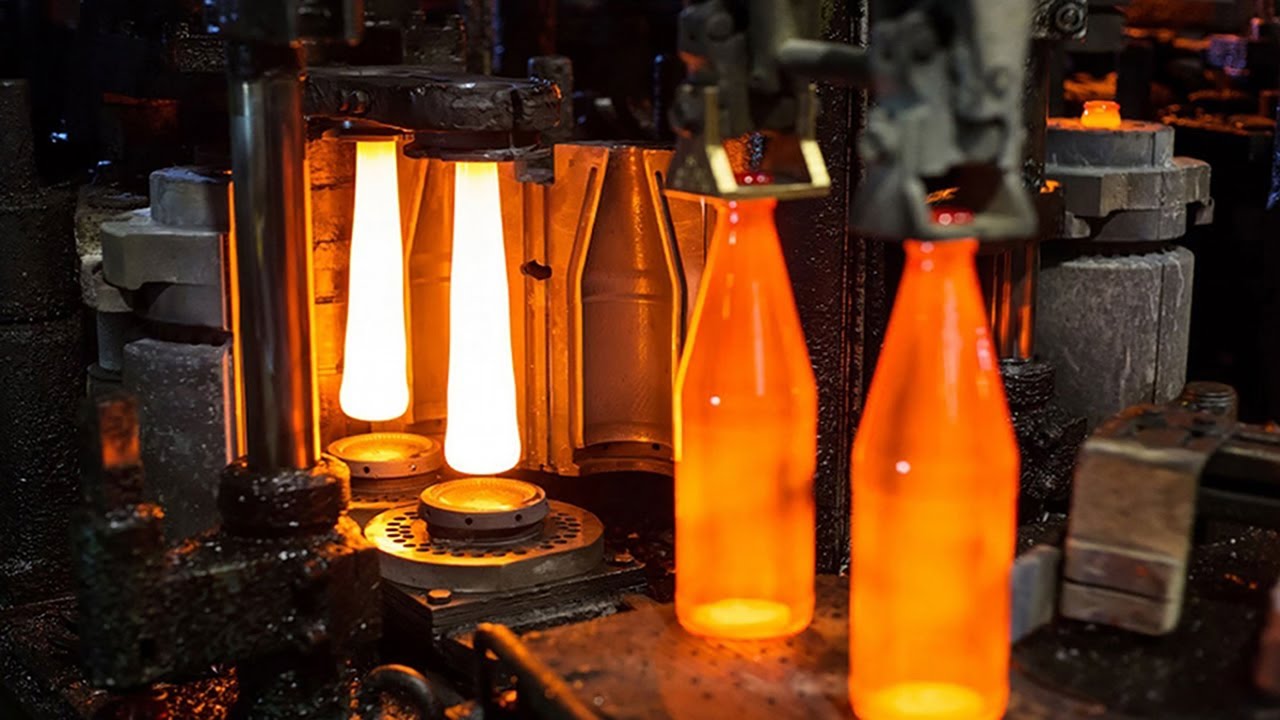Glass bottles exist as a common packaging solution since they maintain their structure while enabling recycling through their substance and maintaining product purity without interfering with ingredients. The creation of glass bottles follows an exact method which requires several complex technical operations starting with raw material acquisition and ending with finished packaging. The following paper details each necessary procedure that combines to create glass bottles.
1. Raw Material Selection and Preparation
It begins with obtaining raw materials that need to be processed for glass bottle production. TGlassproduction relies on the fundamental materials of silica sand and soda ash and limestone and cullet for recycled glass. Silica Sand functions as the main ingredient of glass because it delivers combined qualities of strength and transparency. Soda Ash functions as a silica flux because it reduces the glass melting point to aid shape formation. Limestone within glass bottles makes the material more durable while blocking water from breaking down the material. The use of cullet which represents recycled glass serves as a sustainable solution by improving energy efficiency at production sites. Different glass colors emerge when metal oxide chemicals are added as other components during production. A systematic process of precise material measurement leads to mixing operations before raw material transitions to the melting stage.
2. Melting and Refining
The furnace used for heating mixed raw materials reaches temperatures exceeding 1,700°C or 3,092°F. A continuous operation of the furnace ensures a steady supply of molten glass remains present.
The removal of unwanted gases and bubbles occurs during melting through refining agent application. Moving to the next process becomes possible only after the molten glass attains uniform mixture across all layers. Do visit the website to learn more.
3. Forming the Bottles
The glass moves to bottle shape formation through one of two primary methods after reaching its correct consistency.
a. The Blow and Blow Method serves to manufacture thin-necked bottles.
1. A gob (a small piece of molten glass) undergoes molding after being cut from the blank.
2. Compressed air fills the molding process to form an empty parison which has an uneven shape.
3. After moving to the last mold the parison receives more blowing pressure to accomplish its intended shape and dimensions.
b. Press and Blow Method (Used for wide-mouth jars)
1. A gob is inserted inside a blank mold to create its form.
2. The glass takes form through plunger pressure that creates a parison.
3. The mold production process transfers the parison to complete the final bottle shape at which point compressed air expands it to achieve its final design.
The formation process of bottles through both methods leads to precise and uniform results.
4. Annealing Process
The bottles move through annealing which constitutes a methodical cooling process right after they finish their shape. The bottles traverse a temperature-regulated annealing lehr device as part of their cooling procedure. An annealing step reduces bottle internal stress which stops the glass from shattering when exposed to fast temperature changes.
5. Inspection and Quality Control
The industry adopts strict quality control procedures for testing each bottle until it satisfies all industrial criteria.
The inspection process includes:
- A visual examination process reveals any appearance issues which include cracks or bubbles or any same type of defects.
- The size specifications for bottles are checked by dimensional examinations.
Strength Testing:
- Tests resistance to pressure and impact.
- This scanning technology employs a combination of imaging technologies and laser systems to monitor small imperfections in the glass products.
- The defective bottles are recycled to become raw materials through the melting process.
6. Surface Treatment and Labeling
Surface treatments that include both Hot-End Coating and Cold-End Coating are applied to bottles which helps improve their durability and usability.
Finish treatment at the hot end occurs right after forming to boost scratch resistance.
After the annealing process, the bottles receive cold-end coating which creates smooth surfaces and reduces friction.
After processing the bottles can receive labels through silk-screen printing or pressure-sensitive methods and shrink sleeve applications according to client brand requirements.
7. Packaging and Distribution
The bottles receive proper packaging inside protective materials for safe shipping. Manufacturers acquire empty bottles from the plant which they subsequently use to fill various merchandise including beverages together with pharmaceuticals and other items through the production stage before delivery to consumers.
Conclusion
Manufacturing glass bottles requires expert knowledge from science, engineering and craft for their completion. The entire process beginning from raw material selection through forming and annealing all contributes directly to the creation of durable high-quality bottles. Modern innovations in automation and recycling have propelled glass bottle production into an essential sustainable sector that drives modern packaging operations.

